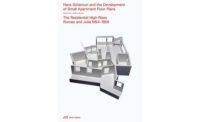| In 2012, architects Paul Dieterlen, Jorge Ruiz Boluda, and Agustín Durá Herrero envisioned a motley crew of guests for an “Inspiration Hotel” conceptual design competition in Spain. The surreal assortment includes Salvador Dalí, Le Corbusier, Albert Einstein, Álvaro Siza, Mies van der Rohe, Steve Jobs, Eero Aarnio, Andy Warhol, and a flock of ducks. |
At RECORD, we frequently find ourselves doing double takes to determine whether an image is a photograph or an uncannily lifelike rendering. Often, these hyper-real images depend on a token cast of characters—coffee-swigging urbanites, couples strolling hand-in-hand, pin-thin women, or a child perched atop Dad's shoulders—that make our eyes glaze over. Yet in this digital age of realistic renderings, architects are increasingly distinguishing themselves by a more flamboyant aesthetic, infusing designs with humor, fantasy, nostalgia, and even a dead celebrity or two.
One new exhibition suggests that these flourishes have a vital history (not to date ourselves) about as old as RECORD's. Cut 'n' Paste: From Architectural Assemblage to Collage City at New York's Museum of Modern Art (until December 1, 2013) traces the history of stylized collages and photomontages from the late 19th century to the present. Another current show, New Views: The Rendered Image in Architecture at the Art Institute of Chicago (until January 5, 2014), identifies distinctive contemporary rendering styles. “People are tired of the perfect computer image or rendering,” says Pedro Gadanho, curator of the MoMA show. “They want something more artistic, with emotion and playfulness.” Indeed, Gadanho's show sidesteps conventional visual tropes for unusual projects featuring acrobats, magenta trees, and other unexpected features.
Here are some of our favorite images from the MoMA exhibition and other sources that cause us to stop and take a longer look.











Post a comment to this article
Report Abusive Comment